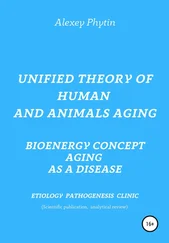Angelo Barbato - Zero Disease
Здесь есть возможность читать онлайн «Angelo Barbato - Zero Disease» — ознакомительный отрывок электронной книги совершенно бесплатно, а после прочтения отрывка купить полную версию. В некоторых случаях можно слушать аудио, скачать через торрент в формате fb2 и присутствует краткое содержание. ISBN: , Жанр: Медицина, Медицина, Здоровье, Спорт, на английском языке. Описание произведения, (предисловие) а так же отзывы посетителей доступны на портале библиотеки ЛибКат.
- Название:Zero Disease
- Автор:
- Жанр:
- Год:неизвестен
- ISBN:978-8-87-304045-3
- Рейтинг книги:5 / 5. Голосов: 1
-
Избранное:Добавить в избранное
- Отзывы:
-
Ваша оценка:
- 100
- 1
- 2
- 3
- 4
- 5
Zero Disease: краткое содержание, описание и аннотация
Предлагаем к чтению аннотацию, описание, краткое содержание или предисловие (зависит от того, что написал сам автор книги «Zero Disease»). Если вы не нашли необходимую информацию о книге — напишите в комментариях, мы постараемся отыскать её.
Zero Disease — читать онлайн ознакомительный отрывок
Ниже представлен текст книги, разбитый по страницам. Система сохранения места последней прочитанной страницы, позволяет с удобством читать онлайн бесплатно книгу «Zero Disease», без необходимости каждый раз заново искать на чём Вы остановились. Поставьте закладку, и сможете в любой момент перейти на страницу, на которой закончили чтение.
Интервал:
Закладка:
The Third Industrial Revolution is also and mostly a paradigmatic shift for the human race.
An epical passage from an individualistic and utilitarian lifestyle to a biospheric and empathic one. In a society in which the marginal cost of production and distribution of goods and services is closer and closer to zero, where information, objects, ideas, services and people travel at infinitesimal costs compared to a hundred years ago, and in timeframes then unimaginable; the human genre is emerging from an economy of scarcity, entering a sustainable system of abundance. An economy in which its activity will no longer develop according to the canons and standards of the traditional market economy based on profit, but according to canons and standards of a social economy based on collaborative Commons.
Jeremy Rifkin lucidly describes Energy Commons as composed of millions of prosumers (both producers and consumers) able to generate almost all their green energy needs at a marginal cost close to nothing , the Commons of Logistics able to project, print and distribute goods and services at almost null marginal costs, and the Commons of Health, Education and Culture able to guarantee scholastic, health and cultural services of same condition; or Mobility Commons for the movement of humans in increasingly sustainable, efficient and economic ways.
The new generations are projected beyond the capitalist market and the centralized, hierarchical, closed, patriarchal, property-tied model towards a distributed model, which is collaborative, open, transparent, equal and empathic.
It is what Rifkin calls power on a lateral scale, or âLateral Powerâ.
Todayâs youth, linked together in a virtual sphere (by social networks through which information travels with abundance and freely) and in a physical space (thanks to low cost flights, unimaginable ten years ago, or faster and more efficient metropolitan transport lines), âare rapidly getting rid of the remaining ideological cultural and commercial ties that have long been separating the âmineâ from the âyoursâ, in the frame of a capitalistic system characterized by relationships of private property, market exchanges and national borders. âOpen Sourceâ has become the mantra of a generation that sees power relations in a completely new way compared to their parents and grandparents who have lived in a world dominated by geopolitics.â (cit. Jeremy Rifkin, Society at Zero Marginal Cost, pag. 429-430)
In a new empathic civilization profoundly integrated in the biosphere community, all our natural resources will become shared patrimony and the way that they are used will become everyoneâs business.Even the planning of urban spaces, be it industrial or rural, will not be an exception to this rule.
The construction of large industrial and infrastructure installation networks of the third millennium and the third industrial revolution cannot therefore continue to proceed according to the dissipative and unsustainable canons of the fossil era. Networks were built in disregard of the principles of efficiency, space optimization of urban and rural spaces were ravaged repeatedly and savagely for the construction of tens of thousands of power lines, pipelines, cable ducts, aqueducts, road infrastructure, electronic networks and lighting networks.
In the collaborative Commons idea, the internet of things offers new and unreleased possibilities of âdoing more with lessâ (the principle of energetic efficiency affirmed by the European Union) taking advantage of the existing networks and enriching them with new functions, useful to expand the sharing economy and empathy among human beings.
The collaborative Commons is based on the idea that the thermodynamic laws cannot be ignored, minimized, avoided or violated. The first law of thermodynamics clearly tells us that nothing is destroyed but everything is transformed. Therefore, burning an object to close the waste cycle does not at all entail its elimination or freedom from it, but simply having changed its state, from solid to gas and making it even more dangerous not only for the environment but also for human health. All the energy of the second industrial revolution is based on the violation of the laws of thermodynamics. The combustion of a fuel to bring about propulsion or the turning of turbines is a thermodynamic folly with lethal consequences to human health. Changing the paradigm from the fossil cycle to the solar cycle, therefore entails activating a new, less harmful economy, consequently more in line with an illness prevention policy and closer to the objective of zero disease.
The Third Industrial Revolution is creating healthier and cleaner societies, an agriculture without pesticides or genetically modified organisms (GMO), a distributed industry instead of one centralized on very reduced emissions. On the contrary, continuing with the vertical logic will inevitably produce health pollution as an effect of soil, water and waste landfills contamination and the poisoning of air by incinerators.
However, with his new book, Rifkin causes us to reflect , he also covers the correlations between environment and health, he illuminates us on how the doctor/patient relation is changing in the dynamic of a new community of distributed health. Rifkin reaches this considerable result described also as the âCommons of Healthâ.
Why not imagine, in fact, beyond the Commons of Information, the Commons of Energy, also the Commons of Health? âA Commons in which modern technologies of distributed and interactive information permit Dr Gille Frydman, founder of ACOR (Association of Cancer Online resources) to develop a model of participative medicine in which different subjects converge in a sole Commons. Patients, researchers, doctors, financers, producers of medical equipment, therapists, pharmaceutical companies and health professionals, would all be committed in collaborating to improve the care of the patientâ (Rifkin, Society at Zero Marginal Cost, page 343).
This is not a remote or an unrealistic hypothesis. âPatientslikemeâ, a social network of over 200,000 e-patients already fights 1,800 diseases. An important achievement they have obtained has been exposing the scandal of lithium-based pharmaceuticals used for Amyotrophic Lateral Sclerosis. A study based on information received online showed how these drugs were totally uninfluential in the treatment against ALS. Such an example shows how the âopen sourceâ approach in medical research can produce important results, as opposed to competitive research, through which data remains trapped under a vertical, limited and secretive system.
In medicine, more than in any other sector, it becomes increasingly fundamental to dispose of âbig dataâ with adequate algorithms, following the crowdsourcing model in order to identify sanitary models at low marginal costs and yet with very high efficiency. In the chapter âEveryone is a doctorâ of his latest book, Jeremy Rifkin reminds us that, nowadays, the Internet counts with hundreds of health Open Source Commons. Rifkin consequently highlights that âeverything suggests that their number will increase significantly in the coming years, when in various countries the electronic storage of health data will make health care support services more fluid and efficient... The big data, that will therefore be made possible to generate in the United States as in all other countries, will form a pool of information that, if properly exploited by open source Commons oriented health by patients, may, subject to appropriate safeguards on confidentiality, revolutionize the health sectorâ (Rifkin, Ibidem, page 348) .
Hence, the message launched from the collective of sensitive and intelligent doctors interpreting Rifkinian thought, among whom are Dr. Angela Meggiolaro, Dr Bruno Corda and Dr Angelo Barbato, completes the vision of a society of zero emissions, waste, kilometres and of a zero marginal cost economy.
Читать дальшеИнтервал:
Закладка:
Похожие книги на «Zero Disease»
Представляем Вашему вниманию похожие книги на «Zero Disease» списком для выбора. Мы отобрали схожую по названию и смыслу литературу в надежде предоставить читателям больше вариантов отыскать новые, интересные, ещё непрочитанные произведения.
Обсуждение, отзывы о книге «Zero Disease» и просто собственные мнения читателей. Оставьте ваши комментарии, напишите, что Вы думаете о произведении, его смысле или главных героях. Укажите что конкретно понравилось, а что нет, и почему Вы так считаете.












